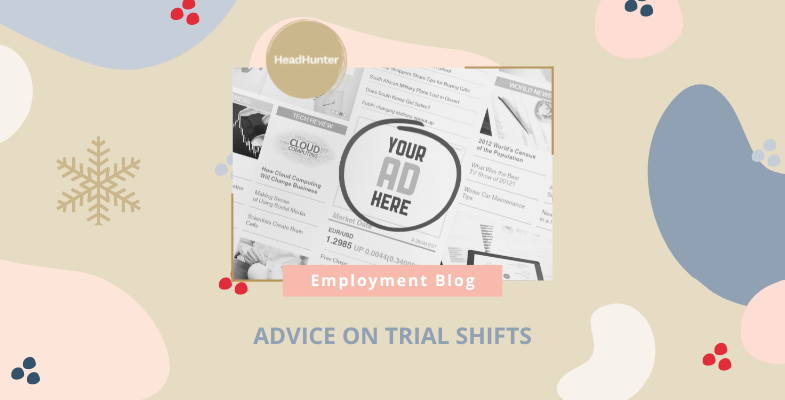On the fifth week of Christmas, my recruiter gave to me – Advice on trial shifts!
In Hairdressing, Beauty and Aesthetics, it’s industry standard to ask a prospective employee to take part in a trial shift prior to hiring, as the work we do is skill based.
Candidates are fiercely aware of the responsibilities of employers when it comes to trials, and here we share our tips on making sure that you’re making the most of the opportunity to trial your candidate, whilst avoiding raising any red flags.
- Keep the trial as short as possible
The purpose of the trial shift is to ascertain the persons suitability for the position, as well as fully grasp their skill level. Generally, a trial shift would run for 1 – 3 hours, and anything that goes beyond 4 hours would only be reasonable if you are observing a service or treatment that takes that long to perform.
Arranging a trial shift that runs over the course of a full shift, could be a red flag for a potential employee, and we would recommend keeping the time much shorter.
2. Clearly outline whether the trial is paid, or unpaid.
The type of work performed during a trial is what would determine if the trial were paid or not. If the trial is simply a demonstration of skills under the supervision of the hirer, then absolutely, it can be unpaid, however if the candidate would be performing normal duties in the salon, without supervision and the services performed are on paying clients – the employer should consider paying the candidate under an employee agreement.
3. Provide clear instruction on what to wear
Your definition of appropriate attire for a trial could be very different to the candidates, and to avoid an awkward exchange on the day, it is best to confirm the expectations around employee dress-code prior.
4. Make sure you’re available to closely observe the candidate
The person that is making the hiring decision should ideally be the one to observe the candidate during the trial, after all, they are the one that is making the decision!
At an absolute stretch, if you’re not around to observe make sure you introduce the person that will be supervising them and properly brief that supervisor on what you would like assessed during the trial. Ask them to provide detailed information on how the candidate performed the tasks that were outlined, ideally in writing.
5. Organise models for the shift
Utilising otherwise paying clients to assess someone’s skills does create some grey area on whether the trial should be paid or not. You also run the risk of the candidates’ skills not being up to scratch, and a paying client leaves with a dodgy service! Best practice would be to arrange appropriate models for a free service, during the trial shift.
Recently, A trial shift is a step that many employers are skipping in the recruitment process out of sheer desperation to get staff on the floor, but it’s important to remind candidates that the trial shift is equally for them as it is for the employer. Arranging a trial shift is an important step in the recruitment process so that both parties can make an informed decision about whether it’s the right match for them.

